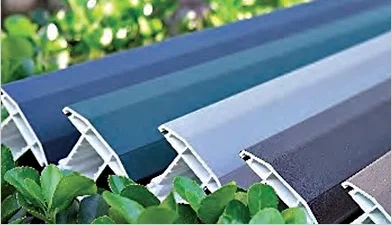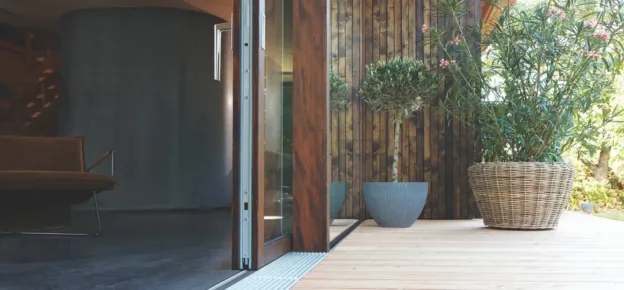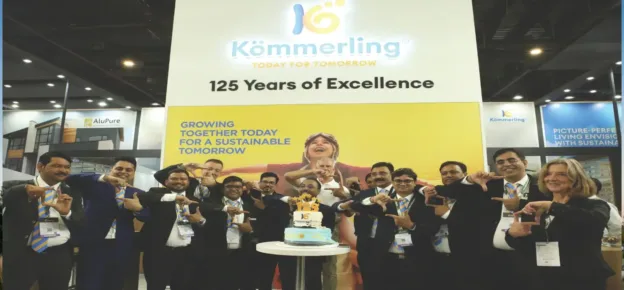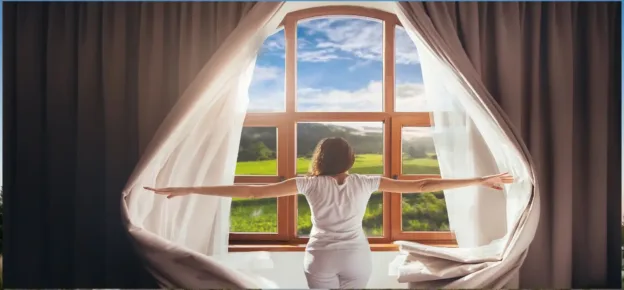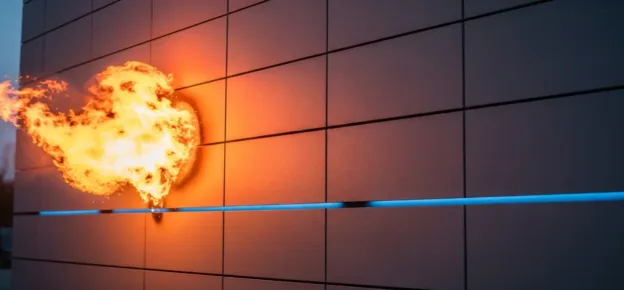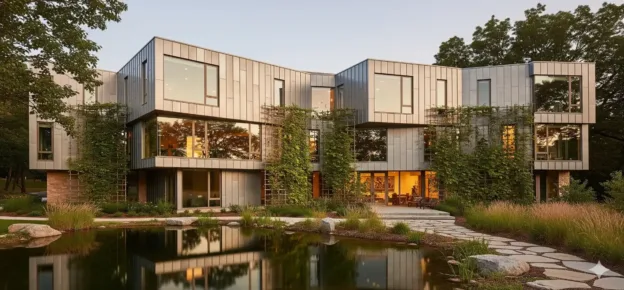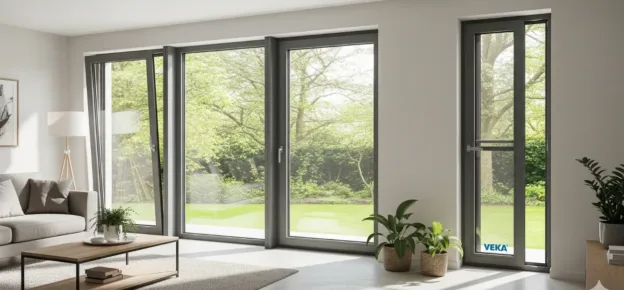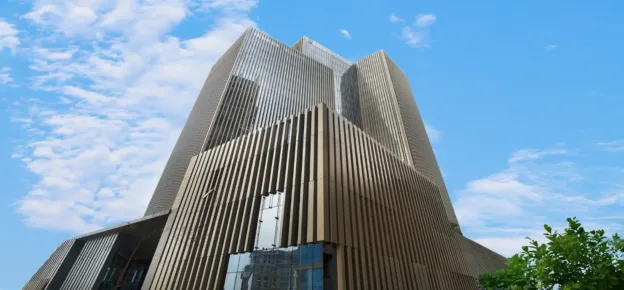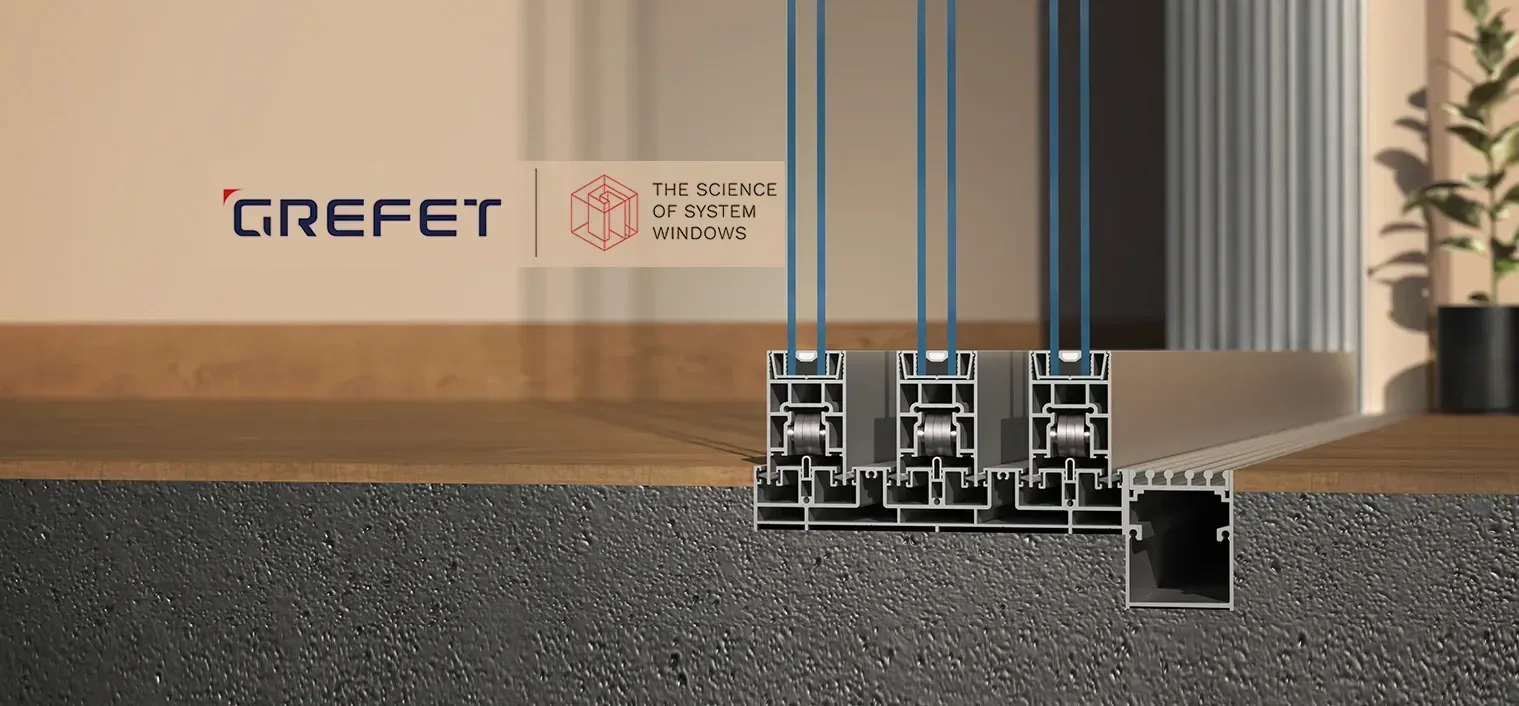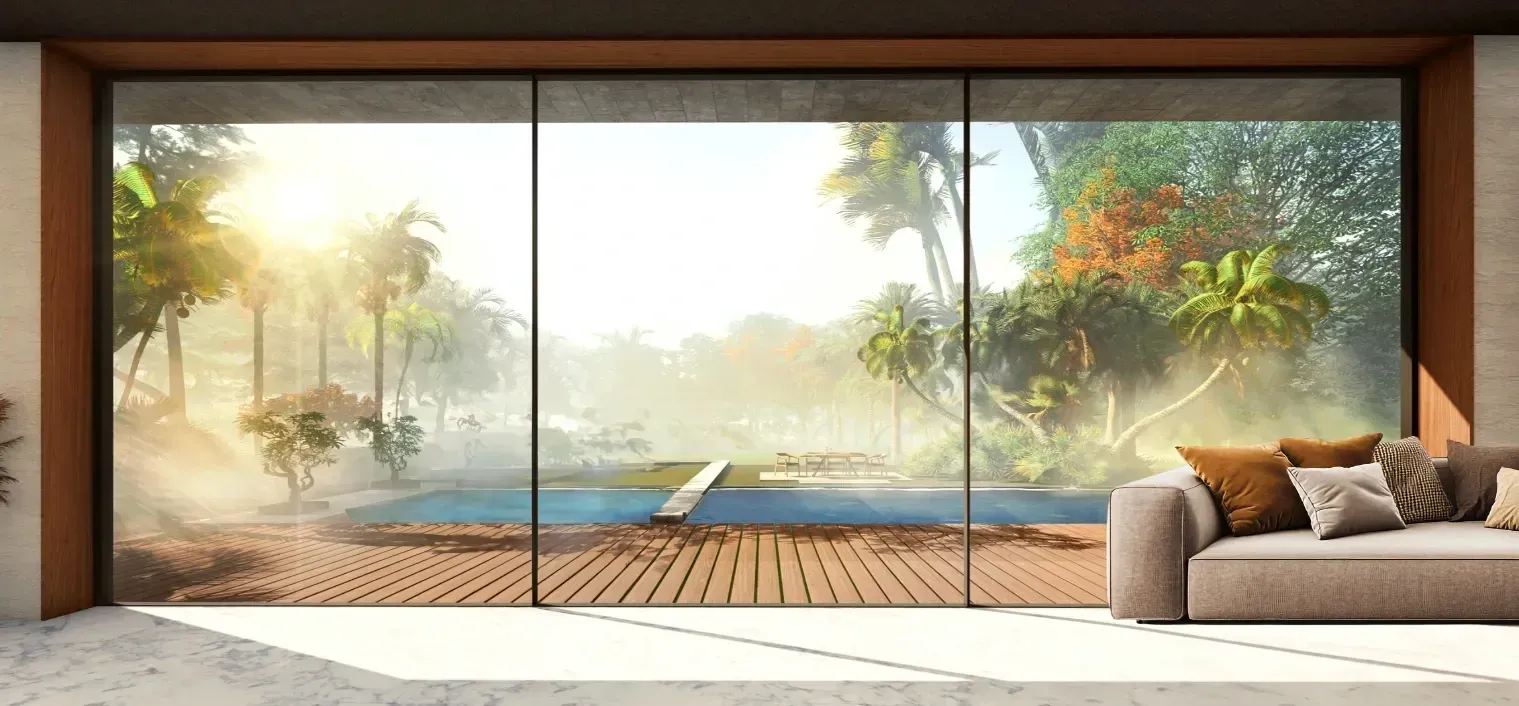With the improvement of people’s aesthetics in the architectural style of buildings, the colouration of uPVC window profiles is increasing continuously, thus leading to increasing demand for UPVC window fabricators. However, the current colouration process for doors and windows such as lacquering, colouring, co-extruding etc., all of them are not the best solution due to the limitation proved for years.
Co-extrusion
For example, co-extrusion is the most popular colouration process for uPVC window profiles suppliers in Asian area nowadays. It proves the outside single coloured uPVC window is the strongest demand in the market. The advantage of co-extrusion is the low cost, but there are lots of disadvantages like not only single colour and higher mould investment but also the bad feed-backs from various regions especially in extreme climate area after the application in recent years. It performs different weather resistance. The profile will release its internal co-extrusion stress and cause deforming when climate changes between hot and cold, which will even lead to the cracking of fillet weld.
Suggested Read: Direct and Indirect Extrusion
Lacquering
When it comes lacquering, although there are more colour diversity, but it is very difficult to keep a small colour difference between producing batches. Furthermore, the anti-scratch and weather resistance will be decided on the binding strength of spraying paint layer and profiles. The truth is this strength is always weaker than estimated. Because of the above, lacquered uPVC profiles are very rare to be used in the market.
Colouring
To use pigment to colour the whole uPVC profiles when extruding we called it colouring. Because the base material is PVC, so the problem of this process is low weather resistance.
Lamination
In Europe, lamination is always the most popular process for colourful uPVC windows, but lamination hasn’t been accepted by the main market in Asian market because of the high cost. Lamination relies on excellent quality of branded film, which can not only solve the weather resistance problem but also fully meet the demands of personality and colouration for uPVC windows. In brief, lamination is nothing but wrap a high weather resistance foil on the uPVC profiles with high efficient and high weather resistance adhesive through a laminating machine.
The profiles just need to be kept for some time to get the adhesive solidified and can be used for the next process. The outstanding advantages of lamination mainly appears in the following aspects: the surface of colourful profiles won’t bend or have deformation because of zero internal stress ; different single colour and wood grain colour will have more design diversity; profiles colour can be easily and fast changed during lamination; flexible small batch production; environment-friendly and no pollution.
Films for Lamination
With more and more window film companies coming to the market and putting into efforts on research and promotion, lots of window film products with different characters and functions came up in the market.
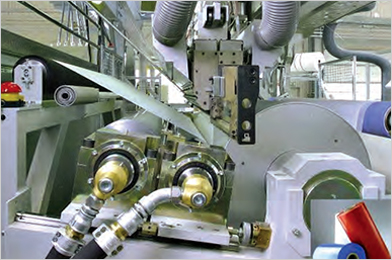
According to the division of the base layer, it can be divided into PVC, PMMA, ASA, etc. which can also fundamentally decide the basic weather resistance ability of window film. And also we can get different levels of weather resistance films to adapt different climatic region by the method of different technology on the surface layer treatment.
RENOLIT, as the earliest window film company entered in Asian market, series products are being made now. It can not only achieve different surface effects for the single colour and wood grain colour films, but also can develop different levels weather resistant films like MX,PX,FX through the combination of base layer and surface layer material.
Skai film from Hornschuch,Germany and LG film from Korea also have their own characteristics. For example, Hornschuch is the first company coming up with the cool colour concept, its anti-infrared technology of the pigment can reduce the thermal effect of near-infrared solar radiation, then reduce the heat build-up of the windows.
Additionally, LORIKA window film from Austria, with its innovative use of SABIC Geloy ASA as base layer, which successfully transplant the perfect weather-resistant property of Geloy resin to the application of window films. And also with its appropriate price, it is highly rewarded and respected in the market once launched in the market. Geloy ASA resin is a special ASA resin which proved to be applied to exterior applications such as fences, vehicles, boats, roofs, co-extruded uPVC window profiles more than 10 years without fading.
Future Colouration Process
In the expected future, with the different levels of window films continuously launched in the market, there is a big hope that lamination process can replace the current co-extrusion process in large scale. In the trend of more and more enhancement on the internal quality of uPVC profiles industry, proved better performance of lamination process will win the future for sure.
Contact: Mr. Tracy,
E-mail: india@lorikafilm.com
Phone: +91 9886621130
Website: www.hkfar-star.com/
www.lorikafilm.com
